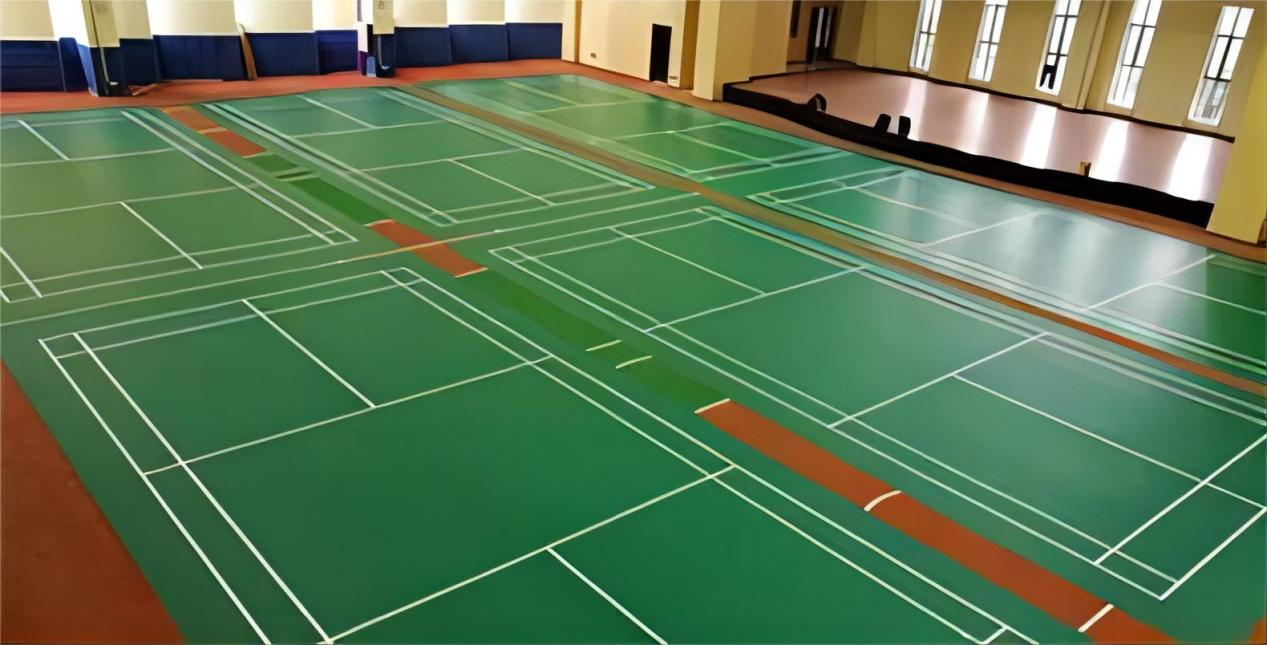When it comes to sports flooring, the material you choose can significantly impact performance, safety, and overall user experience. Two popular choices for sports flooring are PVC (Polyvinyl chloride) and rubber. Each material has its unique characteristics, and understanding the differences between PVC and rubber sports flooring is crucial for making an informed decision.
PVC Sports Flooring: Versatility and Durability
Polyvinyl chloride, or PVC, is a synthetic material known for its versatility and durability. PVC sports flooring is a common choice for indoor sports facilities, gyms, and multipurpose courts. Here are some key features of PVC sports flooring:
Versatility and Aesthetics: PVC flooring comes in a variety of colors and designs, allowing for customization to match the aesthetics of the facility. This makes it a popular choice for spaces where appearance is a key consideration.
Shock Absorption: PVC sports flooring often includes a foam or rubber underlay, providing excellent shock absorption. This is crucial for sports like basketball and volleyball, where players frequently engage in high-impact activities.
Ease of Maintenance: PVC flooring is relatively easy to clean and maintain. It is resistant to water and most chemicals, making it suitable for areas where spills are likely to occur.
Rubber Sports Flooring: Resilience and Comfort
Rubber sports flooring is another widely used option, particularly in areas where resilience and comfort are top priorities. Here are the distinguishing features of rubber sports flooring:
Impact Resistance: Rubber flooring is renowned for its excellent impact resistance. It can withstand heavy weights and constant foot traffic without showing signs of wear and tear, making it suitable for weightlifting areas and fitness centers.
Resilience and Comfort: The natural elasticity of rubber provides a cushioning effect, offering comfort to athletes and fitness enthusiasts. This resilience makes rubber sports flooring ideal for spaces where individuals spend extended periods on their feet.
Sound Absorption: Rubber has sound-absorbing properties, making it an excellent choice for spaces where noise reduction is a concern. This is particularly beneficial in fitness studios and areas where multiple activities are taking place simultaneously.
Choosing Between PVC and Rubber: Considerations for Decision-Making
The choice between PVC and rubber sports flooring depends on various factors, including the type of sports or activities conducted, budget constraints, and aesthetic preferences. Facility owners and managers need to carefully evaluate these factors to determine which material aligns best with their requirements.
Sports Specificity: Consider the primary sports or activities that will take place on the flooring. PVC may be suitable for multipurpose courts, while rubber might be preferable for weightlifting or high-impact training areas.
Budget Constraints: PVC sports flooring is often more budget-friendly compared to rubber. Facilities with tight budgets may find PVC to be a cost-effective solution without compromising on quality.
Long-Term Durability: Assess the expected wear and tear in the facility. Rubber, with its exceptional durability, may be a better investment for high-traffic areas where longevity is a priority.
Conclusion: Making the Right Choice for Your Facility
In conclusion, both PVC and rubber sports flooring have their unique advantages, and the choice ultimately depends on the specific needs of the facility. Whether you prioritize versatility, shock absorption, or impact resistance, understanding the characteristics of each material is essential for making an informed decision.
For more information on choosing the right sports flooring for your facility, please feel free to contact us. As a leading sports flooring supplier, we are here to provide guidance and offer solutions that meet your unique requirements.
Post time: Nov-15-2023

